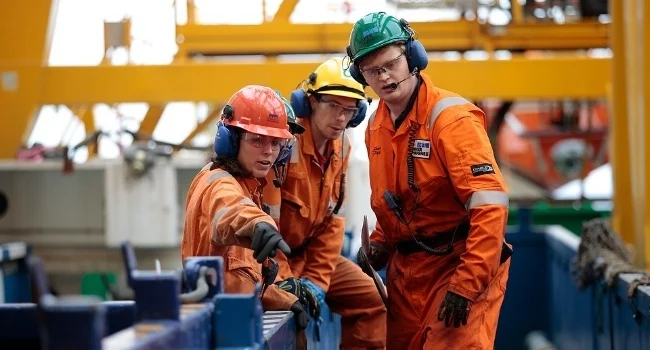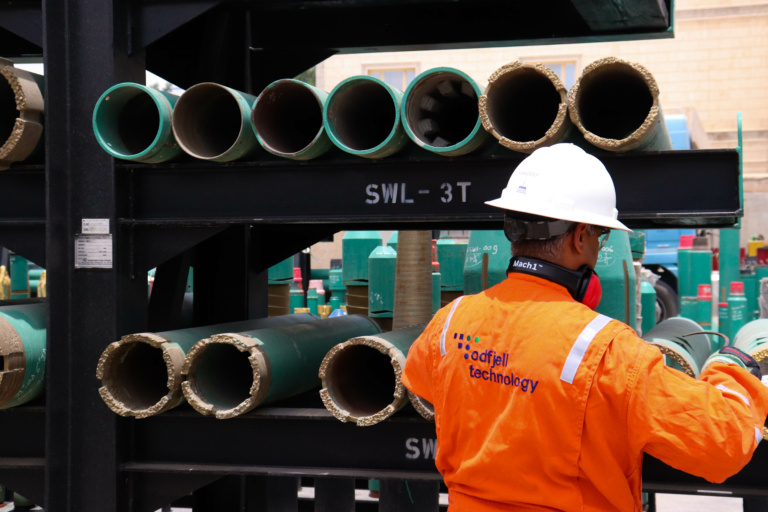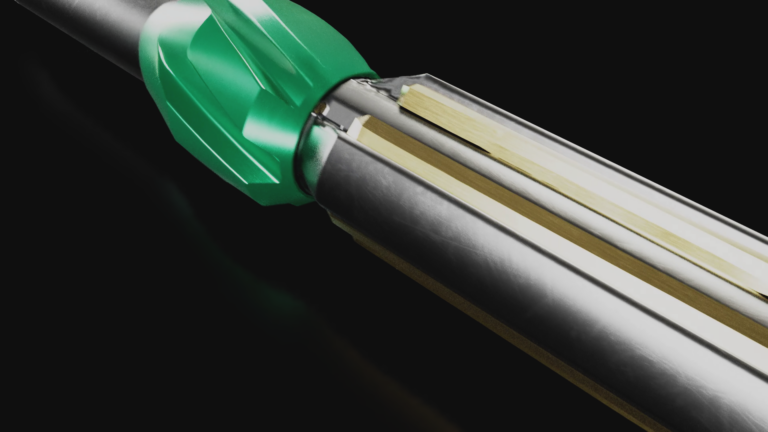Training new TRS technicians: The days of yelling and patronising are over
Being a casing operator is so much more than being able to handle the tools. As a TRS Technician you need a wide understanding of the role, must be a bearer of safety culture, have basic communication skills and know how to behave on a rig to be regarded a qualified one.
“This is a casing joint”
What you no longer do when training a future oil worker is to throw the kid out in the water and see if he manages to swim. Proper TRS training aims at building a solid foundation both theoretically and practically to master the art of casing a well. We start training our candidates in the classroom and follow up with practical exercises in our training facilities on shore. We monitor them closely, and when they show the necessary level of competence, they have to document it by passing the basic level exam. Then they are ready to continue their education off-shore.
> Read also: Improved casing running starts with proper training of the casing crew
Personal training programme
The first period on a rig is spent as a trainee. A thirteen elements training programme ensures the candidate gets a basic understanding of every relevant tool and job performance. After approximately six months the candidate must pass an online test to document basic knowledge in all thirteen elements. Then the practical training starts, guided and overlooked by a senior level specialist for every field. An assessor will determine when the candidate is ready for an exam. A test must be passed to clarify the candidate for that particular process/tool. It usually takes between 6 and 12 months to pass all thirteen elements. But every committed TRS Technician will continue throughout his or her career to acquire more knowledge and expertise.
Training the trainers
Senior level experts with broad experience, the right attitude and personal qualities are selected to attend a three-day programme at our external partner on training. An education that qualify them for the role as trainer and assessor in at OWS. These people are very valuable to maintain a culture of competence and safety, and they develop excellent training skills over the years.
The critical graph reading
The pinnacle of TRS training is learning to read the graphs correctly and the very important skill of interpreting the motions and rotations in the casing tong compared to the recorded graph on the computer. This to determine if the acceptance criteria are met. A theoretical knowledge is already in place, but this is where the candidate develops feel and experience to understand what measures to take if deviations or mismatches occur. A crucial skill to maintain the integrity of the well, and one that can’t be taught otherwise.
Certified TRS crews pay off
A casing operator who fully understands the process on the rig and is able to view his or her own role as a part of a bigger picture, increases efficiency, reduces risk, commits fewer mistakes and is the best insurance against accidents.

By: Svein Krosli
Svein has been with OWS for 15 years as TRS technician, technical supervisor and instructor. He is now Global Product Line Manager, Tubular Running Services.



